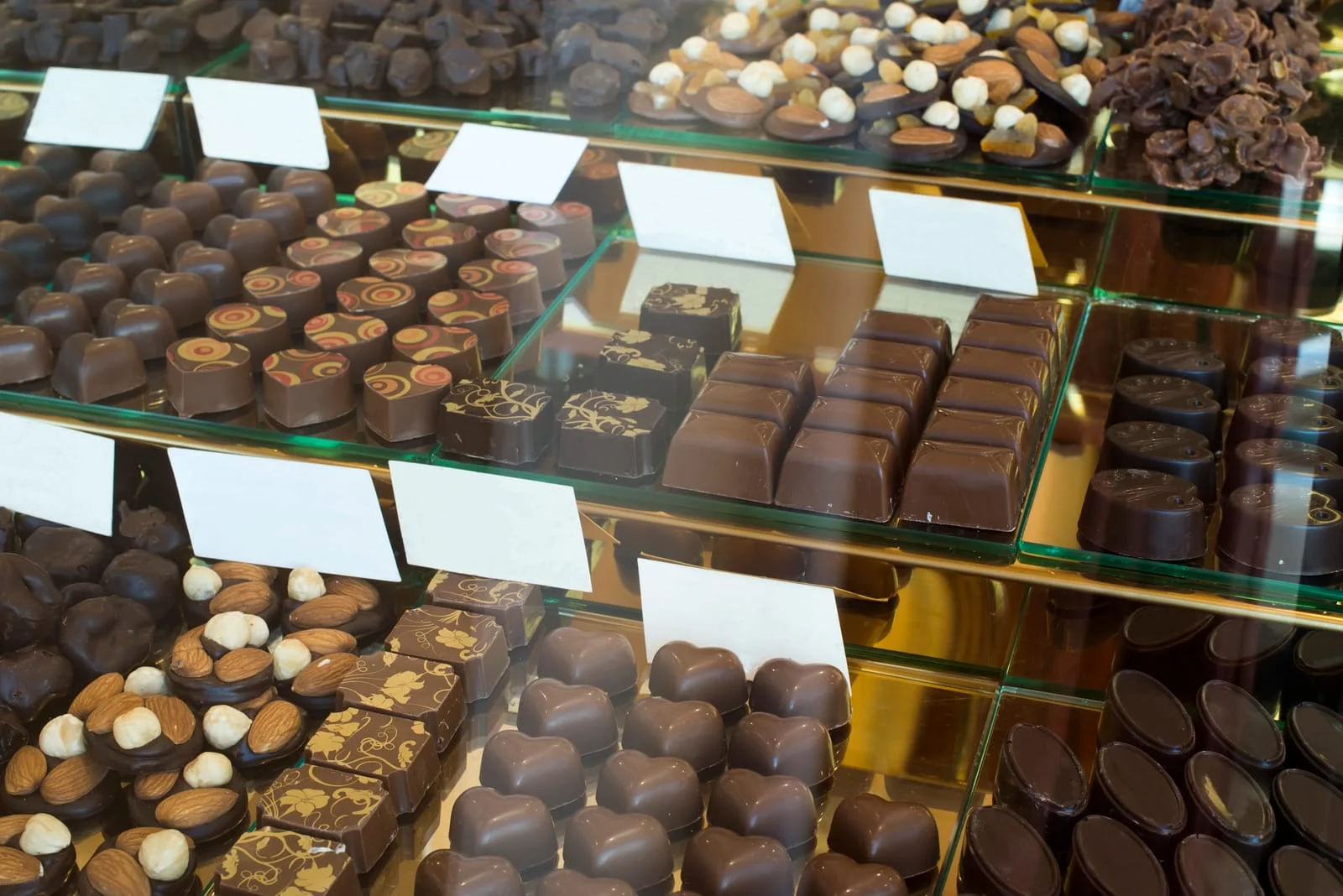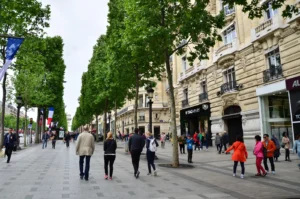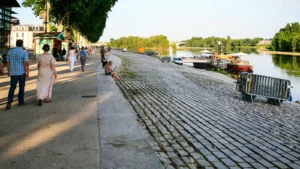Wine may be Bordeaux’s claim to fame, but its chocolate culture is equally captivating. Behind elegant façades and cobbled lanes, you’ll find family-run chocolatiers, bean-to-bar artisans, and cafés filled with the scent of roasted cacao.
Bordeaux’s chocolate legacy dates back centuries through its involvement in Atlantic trade routes and its proximity to Bayonne, the birthplace of French chocolate. Over time, local makers transformed this heritage into a refined craft, blending regional flavors like fleur de sel, Armagnac, and wine-infused ganache.
Today, the city’s chocolate scene mirrors its wine tradition — rooted in terroir, creativity, and craftsmanship. This guide explores the best chocolate shops, modern cafés, workshops, and wine pairings that define Bordeaux’s sweet identity. Whether you’re a curious traveler or a dedicated chocolate lover, Bordeaux promises a sensory journey worth savoring.
A Brief History of Chocolate in Bordeaux
Bordeaux’s connection to chocolate stretches back to the 17th century, when merchants began importing cacao through nearby Bayonne, one of Europe’s first chocolate hubs. Spanish and Portuguese Jewish traders, fleeing persecution, brought their expertise in processing cacao, introducing France to the art of chocolate-making.
From Bayonne, the fascination quickly spread to Bordeaux, whose thriving port linked it to colonial trade routes across the Atlantic. Cacao beans arrived alongside sugar, vanilla, and spices — ingredients that would define early French confections. At first, chocolate was a luxury drink for Bordeaux’s aristocracy, blended with cinnamon, cloves, and sugar in grand salons overlooking the Garonne.
By the 18th century, local confectioners began solidifying chocolate into pastilles and pralines, laying the groundwork for artisanal maisons that still exist today. Through centuries of trade and refinement, Bordeaux transformed imported cacao into a symbol of craftsmanship, culture, and indulgence — much like its wine.
What Makes Bordeaux Chocolate Special
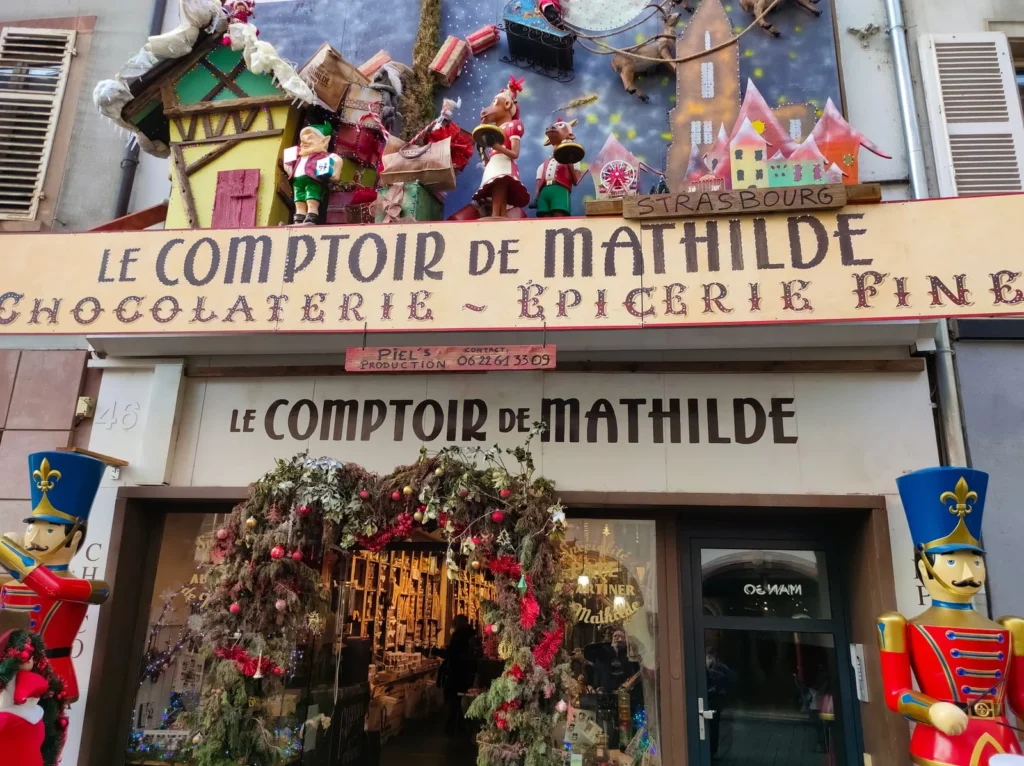
Bordeaux chocolate stands out for its craftsmanship, regional character, and deep respect for ingredients. Much like the city’s wines, each chocolatier expresses terroir — the subtle influence of place, climate, and culture — through taste and texture.
Local makers favor slow, deliberate methods. Many roast cacao in small batches, refine it stone-ground, and hand-temper every bar for precision. Ethical sourcing is now at the heart of the craft.
Artisans like Hasnaâ Chocolats Grands Crus lead Bordeaux’s bean-to-bar movement, tracing cacao directly to cooperatives in Ecuador, Ghana, and Madagascar. This transparency ensures both quality and sustainability, values that today’s consumers demand.
Regional ingredients give Bordeaux chocolate its distinct edge.
- Fleur de sel from Médoc adds minerality.
- Armagnac and Cognac infusions echo the city’s spirit heritage.
- Wine-inspired ganaches capture Bordeaux’s love affair with grapes and cocoa.
The result is chocolate that’s elegant, honest, and unmistakably local — where every bite tells the story of Bordeaux’s soil, sea, and skill.
Best Artisanal Chocolate Shops in Bordeaux
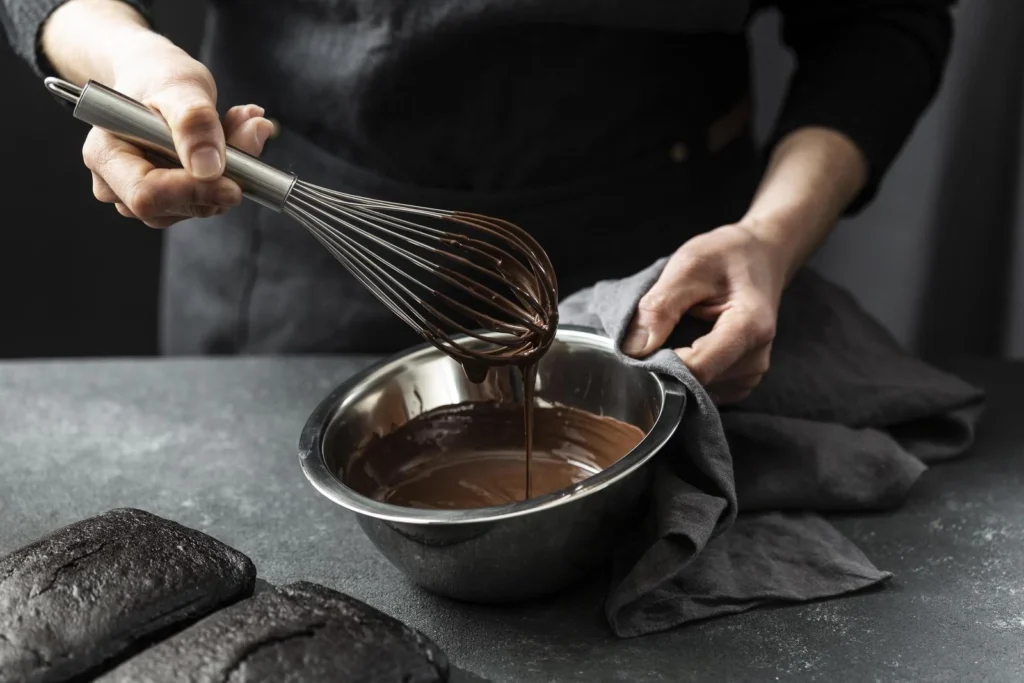
A mix of heritage houses and new-generation artisans shapes Bordeaux’s chocolate scene. Each chocolatier brings a distinct identity — from century-old traditions to bold flavor innovation. Here are the city’s must-visit boutiques for chocolate lovers in 2025.
1. Cadiot-Badie — Timeless Craft Since 1826
The city’s oldest chocolate house, Cadiot-Badie, remains an institution on Allées de Tourny. Inside, polished wood counters and gilded details evoke a bygone era.
- Try: Armagnac truffles, chocolate-covered grapes, and the signature Bouchons de Bordeaux — cork-shaped pralines that nod to local wine culture.
- Why go: It’s a living link to Bordeaux’s 19th-century chocolate artistry, making it an ideal choice for traditional gifts.
2. Maison Darricau — Heritage and Family Flair
Four generations of chocolatiers have made Maison Darricau a local favorite near Place Gambetta.
- Try: Hazelnut pralines, orangettes, and seasonal ganaches infused with Bordeaux wines.
- Why go: Each collection feels like a love letter to the city’s terroir and craftsmanship.
3. Hasnaâ Chocolats Grands Crus — Ethical and Award-Winning
Founded by Hasnaâ Ferreira, a finalist for Meilleur Ouvrier de France, this bean-to-bar atelier redefines modern chocolate.
- Try: Single-origin bars from Ecuador and Madagascar, or cocoa nib spreads with local honey.
- Why go: For purists seeking traceability and flavor depth in every bite.
4. Saunion — Bordeaux’s Nostalgic Classic
Operating since 1893, Saunion is known for its grains de raisins — Cognac-soaked raisins dipped in dark chocolate.
- Try: Canelé-shaped pralines and liqueur truffles.
- Why go: A taste of Bordeaux’s Belle Époque charm, where recipes haven’t changed in generations.
5. La Maison du Chocolat — Parisian Elegance in Bordeaux
Inside Galeries Lafayette, this boutique offers refined French luxury with a Bordeaux twist.
- Try: Ganaches and silky truffles in minimalist gift boxes.
- Why go: For travelers seeking sophistication and flawless texture in every piece.
Together, these artisans showcase why Bordeaux’s chocolate is celebrated across France — rooted in history yet constantly evolving in taste, ethics, and artistry.
Modern Chocolate Makers and Hidden Gems
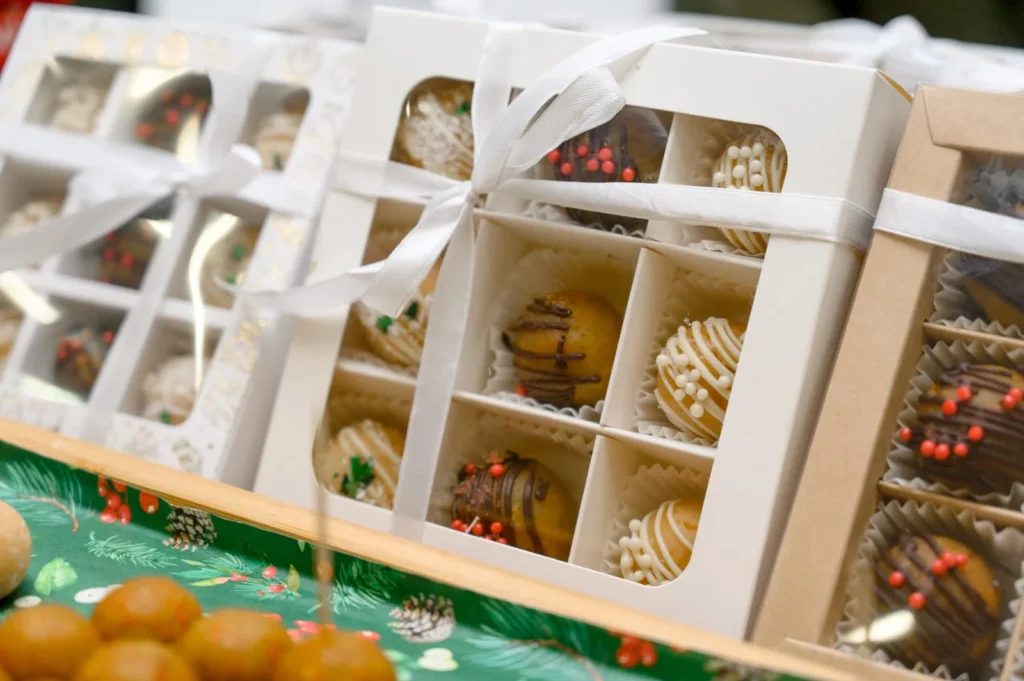
Beyond Bordeaux’s grand maisons lies a new generation of chocolatiers redefining the craft of chocolate making. These creators mix innovation with artistry, blending global techniques and local flair to shape Bordeaux’s contemporary chocolate identity.
Chocolaterie Lalère – Chocolate as Modern Design
Tucked in the Saint-Pierre district, Lalère treats chocolate like art. Minimalist interiors reflect a focus on purity and form, while each collection pushes creative limits.
- Try: Yuzu ganaches, passionfruit pralines, and limited-edition chocolate “tablets” that resemble abstract paintings.
- Why go: For sleek presentation and flavor combinations that challenge tradition without losing refinement.
L’Atelier du Chocolat – Basque Heritage, Bordeaux Spirit
Originally from Bayonne, this boutique brings a playful edge to Bordeaux’s chocolate scene.
- Try: Bouquets de Chocolat — thin petals of chocolate wrapped like flowers — plus Basque pralines and chili-spiced bars.
- Why go: To experience Bayonne’s legacy reinterpreted for Bordeaux’s cosmopolitan palate.
Dune Café Chocolaterie – Chocolate Meets Coffee Culture
Near Quinconces, Dune blends specialty coffee with fine cocoa. Guests can watch artisans temper chocolate behind glass counters while sipping thick, velvety hot chocolate.
- Try: Chocolate fondant, praline-filled pastries, and espresso pairings.
- Why go: Ideal for a leisurely afternoon or creative break, surrounded by the scent of melted cocoa.
These modern chocolatiers show Bordeaux’s forward-thinking spirit — ethical sourcing, minimalist aesthetics, and global influences, all balanced by the city’s dedication to craftsmanship. They prove that Bordeaux’s chocolate legacy is alive, adaptive, and endlessly inventive.
Bordeaux’s Best Cafés and Patisseries for Chocolate Lovers
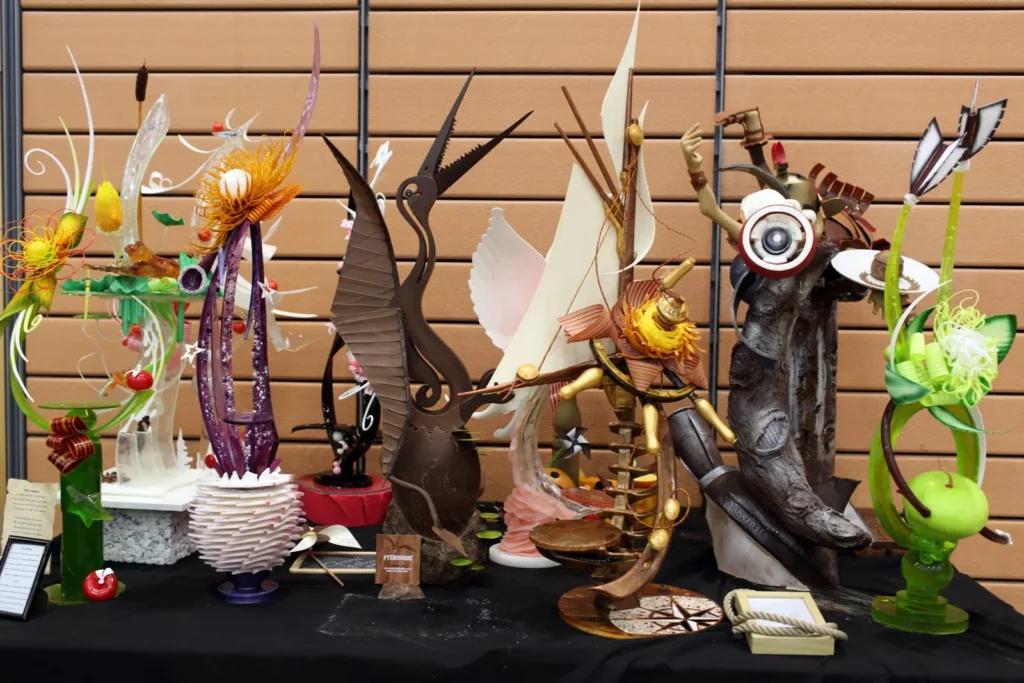
Chocolate in Bordeaux isn’t limited to boutiques. The city’s patisseries and cafés celebrate cocoa through exquisite desserts, delicate pastries, and thick, old-fashioned hot chocolate. These venues blend French pastry mastery with local flair, turning every visit into a tasting experience worth lingering over.
Pâtisserie Miremont – Belle Époque Elegance
Originally from Biarritz, Miremont’s Bordeaux salon carries the glamour of another era. Marble tables, chandeliers, and porcelain cups create an atmosphere of indulgence.
- Try: Chocolate mousse cake, praline mille-feuille, and traditional hot chocolate whisked to perfection.
- Why go: Ideal for a refined afternoon tea or a quiet moment in a historic setting.
Gaston Bordeaux – Contemporary and Creative
Located near Place Pey Berland, Gaston gives classic pastries a modern touch.
- Try: Dark chocolate tart with salted caramel, yuzu domes, and layered chocolate mousse cakes.
- Why go: For bold, photogenic creations that balance sweetness with precision and seasonal freshness.
Les Dunes Blanches Cap Ferret – Light and Local
A favorite from France’s Atlantic coast, this bakery is famous for its airy dunes blanches — sugar-dusted choux buns.
- Try: Chocolate-dipped or cocoa-filled versions exclusive to Bordeaux.
- Why go: A simple, joyful treat that captures the region’s coastal charm.
Whether you crave a decadent slice, a velvety drink, or a delicate pastry, Bordeaux’s dessert scene delivers sophistication in every bite. These cafés and patisseries reflect how deeply chocolate is woven into the city’s culinary identity — elegant, evolving, and irresistibly French.
Chocolate Experiences and Workshops in Bordeaux
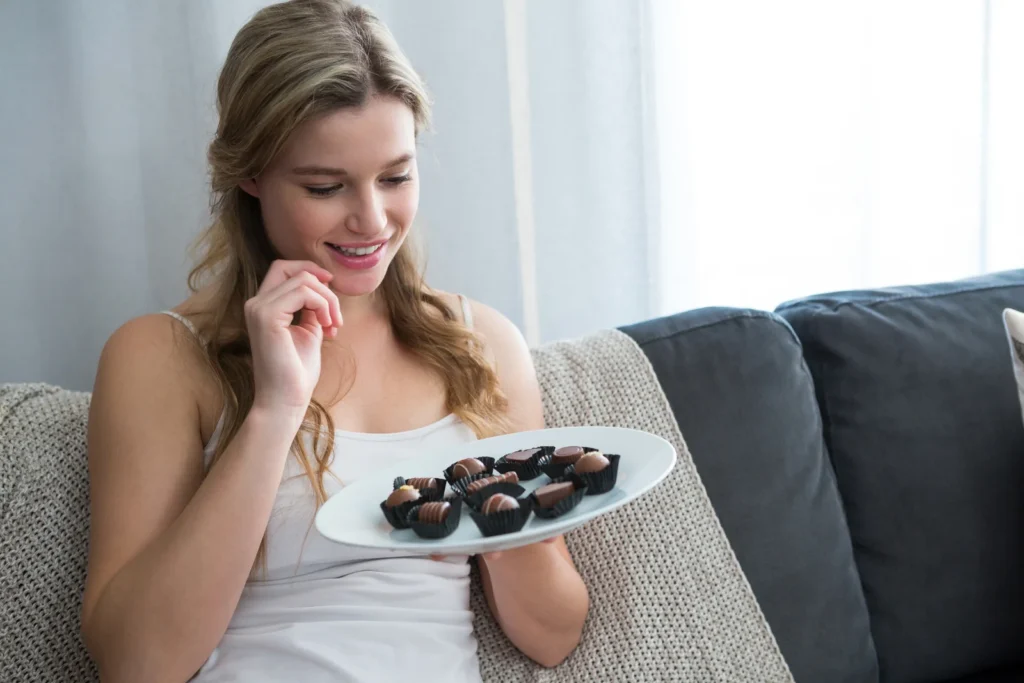
In Bordeaux, chocolate isn’t just meant to be tasted — it’s meant to be experienced. The city invites visitors to explore the artistry behind each bar and truffle through interactive workshops, guided tastings, and pairing sessions that rival its famed wine tours.
Hands-On Chocolate Workshops
Several Bordeaux chocolatiers open their ateliers to visitors eager to learn the craft of chocolate making. Under expert guidance, you can roast, temper, mold, and decorate your own creations.
- Where to go: Hasnaâ Chocolats Grands Crus regularly hosts bean-to-bar workshops where participants transform raw cacao into finished bars.
- Experience level: Suitable for both beginners and enthusiasts. Ideal for couples or families seeking a creative afternoon.
Guided Chocolate Tastings
Bordeaux’s compact city center makes it perfect for walking tastings. Local guides lead small groups through the Chartrons and Saint-Pierre districts, sampling chocolates from multiple artisans while explaining flavor profiles and origins.
- What to expect: A multisensory journey that helps you detect nuances of fruit, spice, and roast — similar to a professional wine tasting.
Chocolate and Wine Pairing Sessions
Few experiences capture Bordeaux’s essence better than pairing its wines with artisan chocolate. Boutique wine bars and urban wineries organize tasting menus that explore the harmony between grape and cacao.
- Where to try: Max Bordeaux Wine Gallery and La Cité du Vin occasionally offer themed evenings combining Cabernet, Merlot, or Sauternes with curated chocolate flights.
Each experience deepens appreciation for Bordeaux’s craftsmanship — showing how cacao, like wine, carries stories of soil, climate, and skill. You’ll leave with sharper taste buds, new techniques, and perhaps a few handmade treats to take home.
Annual Chocolate Events and Festivals
Bordeaux celebrates chocolate with the same enthusiasm it shows for wine. Each year, the city hosts festivals and markets that bring together master chocolatiers, pastry chefs, and cocoa producers from across France and beyond. These events turn the city into a playground for the senses — where tasting, learning, and artistry meet.
Salon du Chocolat – Bordeaux Edition
Every November, the Salon du Chocolat transforms the Parc des Expositions into a chocolate wonderland. This world-famous festival features dozens of French and international brands, live demonstrations, and chocolate fashion shows where gowns are made entirely of cocoa.
- Highlights: Tasting booths, kid-friendly workshops, and competitions judged by top pâtissiers.
- Why go: The best opportunity to discover limited-edition creations and meet artisans shaping the future of chocolate.
Christmas Chocolate Markets
During December, Bordeaux’s main squares — including Allées de Tourny and Place Pey Berland — fill with festive stalls.
- What to find: Handcrafted pralines, truffles in holiday packaging, and wine-infused chocolate gifts.
- Why go: The markets capture Bordeaux’s winter magic, blending seasonal warmth with the city’s refined sweetness.
Wine & Chocolate Pairing Nights
Throughout the year, boutique wineries and bars host special pairing evenings linking Bordeaux’s vineyards and chocolatiers.
- Venues: La Cité du Vin, Max Bordeaux Wine Gallery, and smaller urban cellars frequently feature cacao-centered tasting events.
- Why go: A relaxed, educational experience that celebrates the region’s twin passions — wine and chocolate.
These festivals showcase Bordeaux’s vibrant chocolate culture — one that celebrates its heritage while embracing creativity, community, and shared indulgence.
Where to Buy Chocolate Gifts and Souvenirs
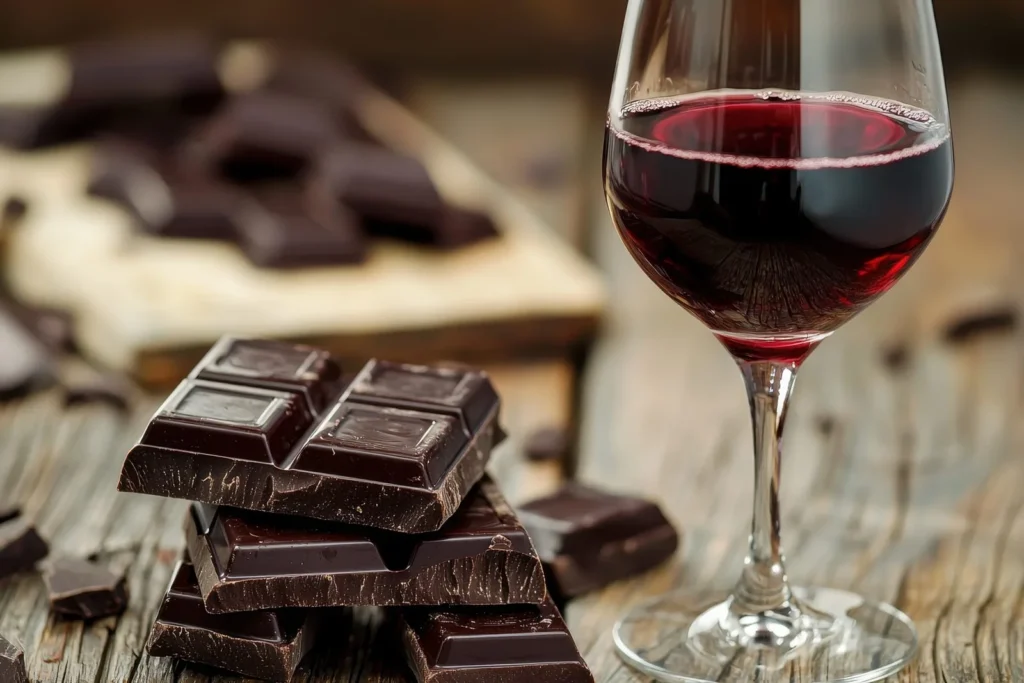
Bringing home chocolate from Bordeaux is like carrying a piece of the city’s elegance and craft. Whether you’re looking for classic pralines or modern bean-to-bar creations, local chocolatiers package their confections with the same artistry they use in production — refined, thoughtful, and unmistakably French.
Where to Shop
- Cadiot-Badie: Known for Bouchons de Bordeaux — cork-shaped chocolates that pay homage to the city’s wine heritage. These make timeless souvenirs for friends and family.
- Maison Darricau: Offers elegant assortments of pralines and ganaches inspired by Bordeaux wines, wrapped in signature gold packaging.
- Hasnaâ Chocolats Grands Crus: Perfect for true connoisseurs. Their single-origin bars come labeled with cacao origin and tasting notes, much like wine bottles.
- L’Atelier du Chocolat: Famous for its Bouquets de Chocolat — thin chocolate petals bundled like flowers, ideal for travel.
What to Buy
- Mixed praline boxes: A traditional favorite that represents Bordeaux’s signature craftsmanship.
- Wine-infused chocolate bars: Reflecting the city’s unique marriage of vineyard and chocolatier culture.
- Chocolate spreads and cocoa nib jams: Excellent for gourmet breakfasts or gifts with a local touch.
- Chocolate-coated fruits: Especially grapes and orange peels — a nod to Bordeaux’s produce and wine tradition.
Shopping Tips
Visit shops early in the day for the best selection, especially during holidays. In summer, request insulated packaging to prevent melting — most boutiques provide it free. For convenience, you can also find select Bordeaux chocolatiers at Gare Saint-Jean and the airport for last-minute purchases.
Taking home Bordeaux chocolate means more than a treat — it’s a piece of the city’s story, refined through time, taste, and tradition.
Pairing Bordeaux Wine with Fine Chocolate
In Bordeaux, wine and chocolate share a philosophy — both express terroir, craftsmanship, and a balance of flavors. Pairing them reveals how two local passions can elevate each other, creating layers of flavor that linger long after the last sip or bite.
Dark Chocolate + Cabernet Sauvignon
Cabernet’s firm tannins and notes of blackberry and oak harmonize with the bitterness of dark chocolate. Choose bars with 70–80% cacao to highlight this balance.
- Perfect match: Hasnaâ Chocolats Grands Crus Ecuador or Ghana origin bars with Left Bank Cabernets.
Milk Chocolate + Merlot
Merlot’s velvety texture and red fruit tones enhance the creaminess of milk chocolate, highlighting its caramel and nut undertones.
- Try: Maison Darricau’s pralines with a smooth Saint-Émilion Merlot.
White Chocolate + Sauternes
Sauternes’ honeyed sweetness and gentle acidity complement white chocolate’s buttery richness, preventing it from tasting overly sweet.
- Pair with: Vanilla or citrus-infused white chocolates from Cadiot-Badie or Lalère.
Spiced or Liqueur Chocolates + Dessert Wines
Fortified or late-harvest wines like Monbazillac and Rivesaltes work beautifully with Armagnac-filled or spice-dusted chocolates.
- Try at: Max Bordeaux Wine Gallery or boutique tasting events around Chartrons.
Most wine bars and gourmet shops now offer curated pairing flights, letting you explore flavor contrasts guided by local sommeliers. It’s an elegant way to experience Bordeaux’s two finest crafts — where vineyard artistry meets cocoa perfection.
Plan Your Chocolate and Wine Escape — Stay at Château de Lasfonds
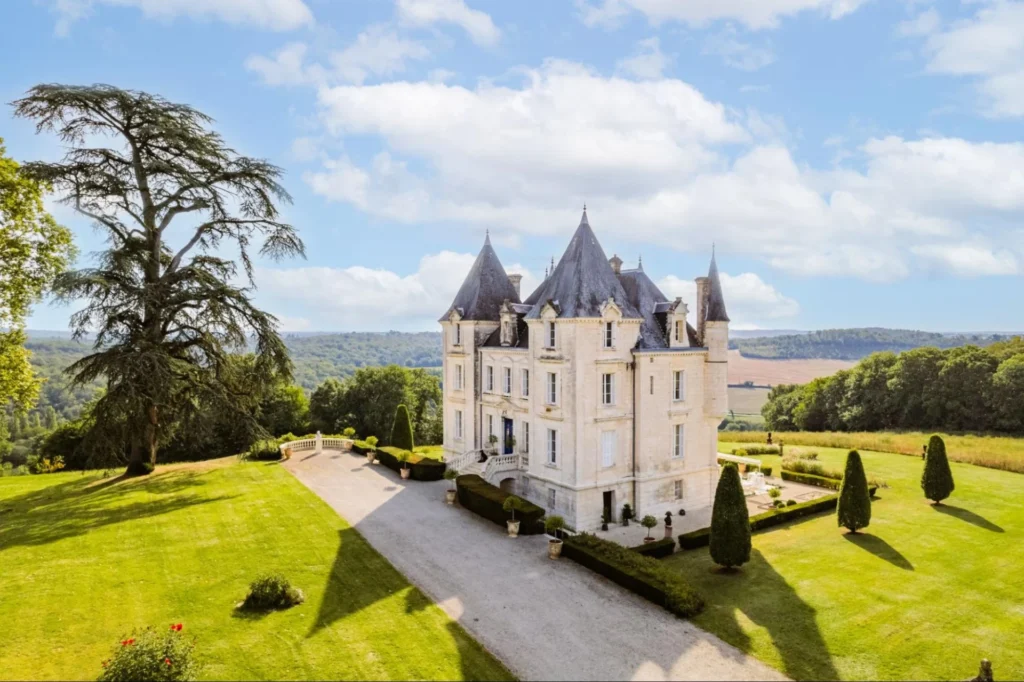
Exploring Bordeaux’s chocolate scene pairs beautifully with a countryside retreat, and Château de Lasfonds offers the perfect base for that experience. Nestled in the Périgord region, just a short drive from Bordeaux, the château combines French heritage with modern comfort — ideal for travelers eager to explore the region’s vineyards, chocolate houses, and markets at their own pace.
Guests can spend the day visiting chocolatiers like Cadiot-Badie or Hasnaâ Chocolats Grands Crus, then unwind in elegant suites surrounded by gardens and rolling countryside. The estate’s fully equipped kitchens invite guests to recreate their favorite Bordeaux desserts or pair fine chocolate with local wines from nearby estates.
With easy access to Saint-Émilion, Bayonne, and the Dordogne valley, Château de Lasfonds is more than a stay — it’s a gateway to the region’s most indulgent pleasures. From cocoa tastings to vineyard tours, it’s the ideal setting to savor every note of Bordeaux’s sweet side.
Book your stay at Château de Lasfonds today and experience Bordeaux’s chocolate and wine heritage in comfort, privacy, and authentic French style.
FAQs About Chocolate in Bordeaux
The best time to explore Bordeaux’s chocolate shops and festivals is from October to April, when the cooler weather preserves the quality of the chocolate. During these months, patisseries release seasonal pralines, truffle boxes, and winter ganaches. November’s Salon du Chocolat and December’s Christmas markets make this the city’s most flavorful season for chocolate lovers.
Prices vary by chocolatier and the origin of the cacao. Expect to pay around €10–€15 for a small box of pralines or €6–€8 for a bean-to-bar tablet. Handcrafted truffles and wine-infused chocolates are slightly higher but reflect true craftsmanship. Shops like Cadiot-Badie and Hasnaâ offer tasting-size assortments so you can sample without overspending.
Yes. Many modern chocolatiers now make vegan-friendly bars and truffles using dark chocolate blends or plant-based ganache. Hasnaâ Chocolats Grands Crus and Lalère offer dairy-free selections made with single-origin cacao and fruit purées. Always ask before buying — artisans are happy to guide you through ingredients and ethical sourcing details.
Absolutely. Several Bordeaux workshops offer bilingual sessions led by professional chocolatiers. Hasnaâ Chocolats Grands Crus and local culinary schools provide English-language classes where you can roast, temper, and mold your own bars. Classes usually last 1–2 hours and include tastings — a perfect experience for tourists seeking something hands-on and memorable.
Keep chocolate in a cool, dry place between 15–20°C. Avoid refrigeration, as condensation dulls its shine and alters texture. If you’re traveling during warmer months, request insulated packaging — most Bordeaux shops offer it. For long trips, place chocolate boxes in your carry-on to protect them from temperature swings in checked luggage.
A few artisans ship internationally, though availability depends on destination. Hasnaâ Chocolats Grands Crus and Maison Darricau occasionally offer limited global delivery for their bars and pralines. If shipping isn’t available, gourmet importers in Paris or online marketplaces often carry select Bordeaux brands during the holiday season.
Bordeaux chocolatiers treat packaging as part of the experience. You’ll see Art Deco patterns, wine-inspired motifs, and elegant gift boxes reflecting the city’s design culture. Shops like Cadiot-Badie use embossed gold and deep burgundy tones — colors echoing Bordeaux’s architecture and vineyards. Presentation here is as refined as the chocolate itself.
Yes. Several chocolate houses offer family-friendly experiences, especially during holidays. Workshops at Salon du Chocolat Bordeaux and tasting walks in Saint-Pierre include activities for children, like decorating pralines or sampling cocoa nibs. Most venues adapt sessions for younger visitors, striking a balance between education, safety, and plenty of sweetness.
Bean-to-bar chocolatiers oversee the entire process — sourcing raw cacao, roasting, and refining it in-house. Traditional shops often buy couverture chocolate and focus on recipes and fillings. Bean-to-bar highlights cacao origin and texture, while classic Bordeaux houses emphasize heritage and flavor layering. Both approaches deliver excellence, but from different starting points.
Sustainability has become a defining feature of Bordeaux’s new generation of chocolatiers. Many now source directly from cooperatives that ensure fair pay and environmental care. Hasna Ferreira, for example, partners with farms that practice agroforestry. This ethical shift aligns with Bordeaux’s broader commitment to responsible gastronomy and global transparency in food sourcing.
Yes. While wine dominates, some cafés and boutiques — particularly Dune Café Chocolaterie — organize tea and chocolate pairing sessions. These highlight how cacao interacts with delicate green, black, or oolong teas. Floral teas pair well with white chocolate, while robust black teas complement the roasted depth and bitterness of dark chocolate.
Definitely, around holidays and festivals, chocolatiers release limited-edition flavors like chestnut praline, citrus peel truffles, or vineyard-harvest collaborations. Some shops also feature single-origin bars from rare cacao regions, which are available for only a limited time. Ask about “collections éphémères” — short-run assortments that showcase seasonal creativity and craftsmanship.
Yes. Specialized tours combine local history with tastings, covering hidden chocolate ateliers and patisseries across the old city. Small groups walk through Chartrons, Saint-Pierre, and Allées de Tourny, stopping at five or six locations for sampling. Guides explain how Bordeaux’s trade history shaped both its architecture and its enduring love of chocolate.
Beyond wine, try chocolate with Armagnac, Cognac, or Bordeaux coffee blends. The city’s roasteries and distilleries produce flavors that mirror cacao’s warmth and intensity. Many cafés offer dual tastings — espresso with dark chocolate or Cognac with praline bites — creating rich contrasts that highlight Bordeaux’s broader artisan spirit.
